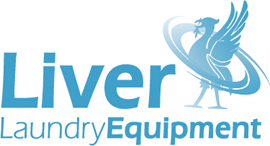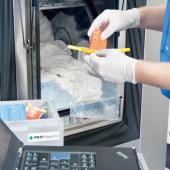
The world has changed in the last year and the pandemic has affected every sector, every person. Among many issues, COVID-19 has brought serious worldwide attention to the climate crisis. The opportunities in the green/low carbon economy are huge and are likely to see big growth in years to come.
Without strong commitment by energy-intensive industries, it will be almost impossible to reach net zero targets in the near to medium future and as a result we are looking at a trend towards repurposing materials and resources, adopting renewable energy sources and reducing waste at every step.
An eco-friendly future beckons for the laundry cleaning and care sector and many expert commentators have opined on 2021 being the year when new advanced equipment dovetails with the need for greener credentials. Dry cleaning may not be on its way out, but it seems it’s being gently nudged towards the door by improved wet cleaning options.
Contributing to this is that the market is demanding greater environmental responsibility and the benefits for cleaners are a boost in custom and lower energy bills. As ever the market dictates the direction and the pace.
What is wet cleaning?
Wet cleaning is obviously not a new concept. As long as go as 1996, the LA Times published a piece on dry and wet cleaning. The author wrote: “If wet cleaning takes off, it would be the biggest change in the dry-cleaning industry since the 1940s, when cleaners started dipping clothes in a chemical called perchloroethylene.”
At the time there were no more than 20 shops in the country devoted solely to wet cleaning. By 2008, the tide was indeed turning. The Washington Post wrote: “When it comes to the environment, traditional dry cleaning is downright dirty. The liquid solvent used at 85 per cent of dry cleaners, perchloroethylene, known as “perc,” is unequivocally bad for people and the planet.”
Dry cleaning doesn’t require water and instead uses liquid solvents to clean. Wet cleaning uses less water than traditional laundry methods. Wet cleaning therefore avoids the use of chemical solvents and advocates state that wet cleaning methods can be used without shrinking or otherwise damaging garments that typically require dry cleaning.
High-tech wet cleaning machines, special dryers, safe detergents and non-toxic spot removers make wet cleaning an environmentally sound method. They have controls that allow them to clean a wide variety of garments in water safely and effectively.
25 years of Miele WetCare
Wet cleaning is continuing to advance and unsurprisingly many commercial equipment manufacturers have been developing superb systems to meet the growth in demand.
Miele Professional has developed an original wet cleaning system that is both environmentally friendly and can handle the most delicate textiles and sophisticated garments with gentle care.
In 1996 Miele executives must have read the LA Times piece, because their WetCare system has been integrated into their professional washer and dryers for 25 years. In the process it has become well known for its environmental credentials having won the Blue Angel seal of approval.
The WetCare system can be used to wash a majority of items that would be thought ‘dry clean only’ and textiles retain their brilliance and bounce with a fresh and pleasant smell.
It’s perfect for the in-house wash of the outerwear of care and nursing home residents; for hotels it can increase the range of in-house services; and for theatre companies, high-value costumes as well as soft furnishings can be washed cost-efficiently.
Miele has a huge range of appliances to choose from that have their patented honeycomb drum that allows for gentler fabric care allowing garments to keep their shape and to last longer; freely programmable PROFITRONIC M controls; and convenient liquid dispensing.
Miele’s Little Giant range employs the WetCare system. They are perfect machines with innovative features, including Wifi technology for places which need quick turn arounds on laundry, and which lack the space for a big commercial appliance.
WetCare is an integral part of the Performance Plus washer and dryers, offering five specific programmes: sensitive, silks, intensive, disinfection and hygiene. The latter is also especially important for infect ion prevention measures in a COVID environment.
The Little Giants are not big on costs or resources either, using only the required water and energy levels and reduced cycle times with washes of only 49 minutes and drying of 38 minutes. Garments also benefit from the new Eco Speed wash which reduces the drum speed allowing the scoop ribs to transport as much water as possible to the top of the drum which then rains down onto the load. At higher speeds, water and particles are rinsed out with greater force, meaning that even the most delicate of items are washed thoroughly and economically.
With Miele not only will you be pleased with the cleanliness of your laundry but you will be protecting the environment.
The LA Times article said: “Despite its humdrum name, environmentalists say wet cleaning has the potential to transform the dry-cleaning industry.” A quarter of a century later, with its adoption by the public and world leading manufacturers like Miele, it’s well on its way to doing so.


















